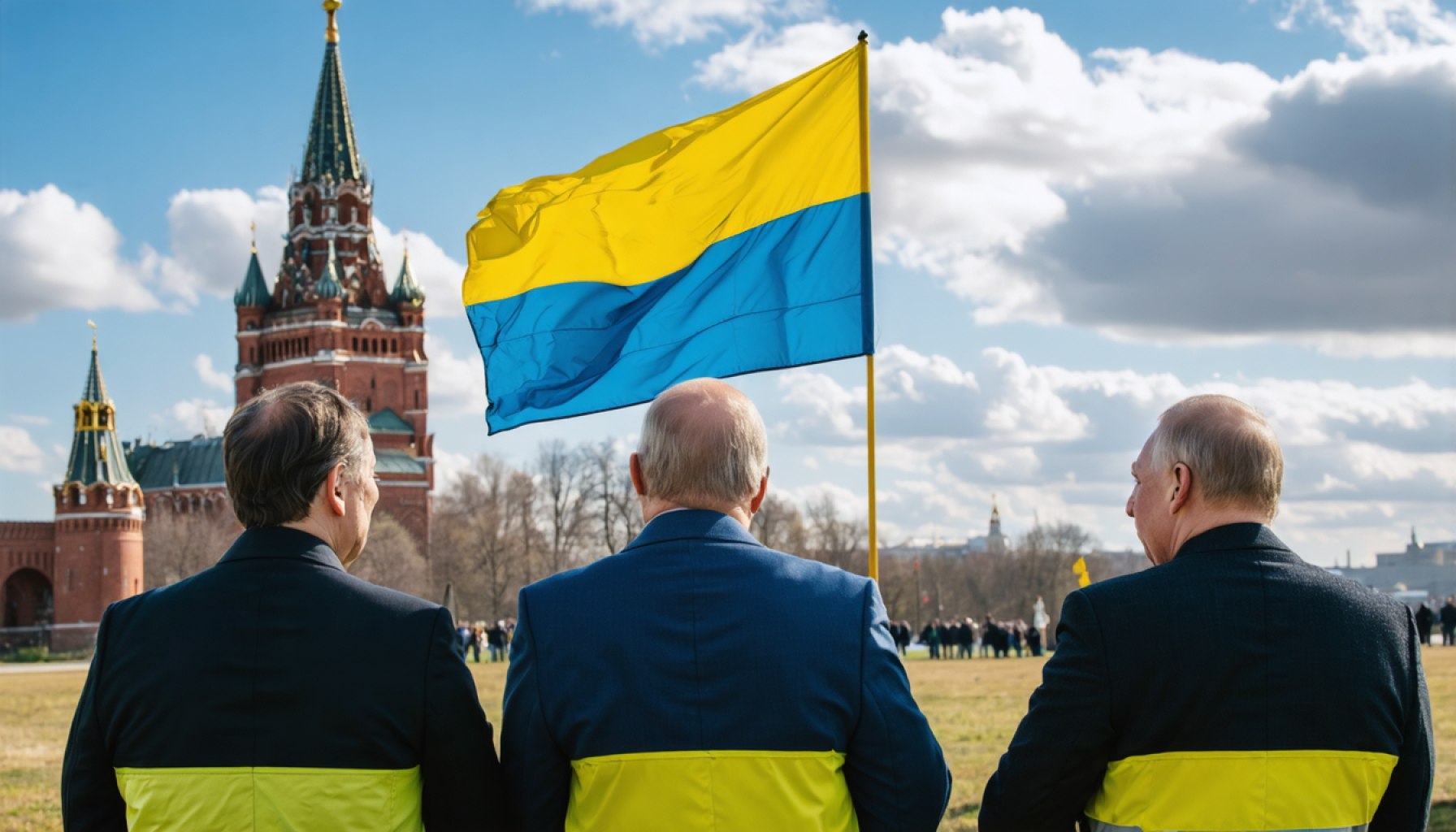- The U.S. and Russia are re-establishing ambassadors to revitalize diplomatic relations.
- Talks focus on Ukraine, aiming for peace through addressing territorial disputes and security guarantees.
- Dialogue includes Ukraine and the EU, emphasizing an “everyone’s voice matters” approach.
- Europe is encouraged to enhance defense strategies while Russia opposes European peacekeeping forces in Ukraine.
- Beyond Ukraine, potential U.S.-Russia cooperation could emerge in geopolitical and economic spheres.
- The initiative highlights dialogue and mutual understanding as keys to transforming conflict into diplomacy and peace.
Diplomats from the United States and Russia are resolving to break the ice and revive diplomatic relations, with plans to re-establish ambassadors on both sides swiftly. This groundbreaking move shines a beacon of hope towards easing the tense currents that have underscored their bilateral relationship. The delicate dance between two historic adversaries sets the stage for consultations on a potential peace deal for the war-torn landscape of Ukraine.
Picture the cold gray of Eastern Europe transforming under a new dialogue that seeks to administer lasting peace. These talks aim to address critical components such as territorial disputes and security guarantees that could finally end the prolonged conflict. While the prospect of drawing lines over Crimea remains a hush-hush topic, there is no denying that the urgency for resolution underscores the discussions.
The intricate weave of diplomacy tightens as the U.S. insists on the inclusion of key players like Ukraine and the European Union, although their roles remain ambiguous. Still, the essence of an “everyone’s voice matters” approach prevails in the discourse.
As nations shift into a more vigilant stance, Europe is urged to step up defense strategies, echoing the need for a united front. Yet, Russia stands firm against any European peacekeeping forces entering Ukraine, citing an ambitious eastward NATO as a looming danger.
Beyond reaching an accord for Ukraine, both the U.S. and Russia envision ventures to cultivate geopolitical and economic cooperation. The path is laden with extraordinary possibilities if a peace accord is charted first.
The resuming conversations between these powerhouses illuminate a crucial message: Dialogue and mutual understanding might just be the keystones towards transforming a conflict-ridden landscape into a shared horizon of diplomacy and peace.
Can U.S.-Russia Diplomacy Usher in a New Era of Global Stability?
Reviving U.S.-Russia Diplomatic Ties: A Transformative Move
In a historical pivot, diplomats from the United States and Russia are making unprecedented strides to revive diplomatic relations. This includes the immediate re-establishment of ambassadors, signaling a potential thaw in relations that have been frosty for years. As both countries navigate this diplomatic odyssey, they aim to not only mend bilateral relations but also explore broader peace initiatives, particularly in the war-torn region of Ukraine.
How-To Steps: Promoting Diplomatic Engagement
1. Establish Ambassadors: Reinstate high-level envoys to facilitate direct communication and negotiations.
2. Initiate Dialogue: Launch initial dialogues focused on mutual concerns, setting the groundwork for broader discussions.
3. Engage Stakeholders: Involve key international stakeholders, including the European Union and direct parties like Ukraine.
4. Committee Formations: Form joint committees to tackle specific issues, such as territorial disputes and security concerns.
5. Agreements Drafting: Begin drafting preliminary agreements focusing on common goals, such as disarmament or economic cooperation.
Real-World Use Cases
– Peace Accords in Ukraine: These diplomatic efforts can lead to formal peace agreements in regions of conflict, easing tensions and potentially leading to stability in Eastern Europe.
– Economic Collaboration: Revived relations can pave the way for joint economic projects between the United States and Russia, promoting global trade and economic growth.
Market Forecasts & Industry Trends
– Increased Trade Opportunities: Improved relations between the U.S. and Russia could open new markets and boost exports, particularly in energy and technology sectors.
– Global Security Impact: Potential reduction in military expenditures as diplomatic solutions overshadow the needs for military interventions.
Controversies & Limitations
– NATO Expansion: Russia’s resistance to NATO’s eastern expansion poses a significant stumbling block in negotiations.
– Territorial Disputes: Sensitive issues like Crimea remain largely unaddressed and could hinder the peace process.
Security & Sustainability
– Security Guarantees: Establishing credible security guarantees for all parties, particularly Ukraine, could ensure the sustainability of peace accords.
– Environmental Collaboration: Joint efforts on environmental issues can promote sustainability and offer mutual benefits.
Insights & Predictions
Experts predict cautious optimism as these diplomatic engagements continue. While challenges remain, the involved parties’ commitment to dialogue provides hope for a substantial shift in international relations.
Pros & Cons Overview
Pros:
– Potential end to prolonged conflicts, especially in Ukraine.
– Opportunities for economic collaboration.
– Strengthened global security frameworks.
Cons:
– Concerns over Russia-NATO dynamics.
– Ambiguity in the roles of smaller but significant stakeholders.
Actionable Recommendations
– Encourage Multi-Party Dialogues: Support inclusive dialogues that involve all pertinent players.
– Promote Transparency: Foster transparency in negotiations to build trust among participating nations.
Conclusion
The revitalization of U.S.-Russia relations may well be a beacon leading to an era of global stability. Success depends on the willingness of both nations to overcome historical animosities through sustained dialogue and inclusive diplomacy.
For more information on international relations and diplomacy, visit the U.S. Department of State.
